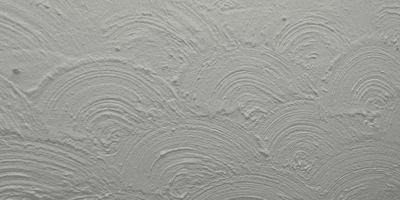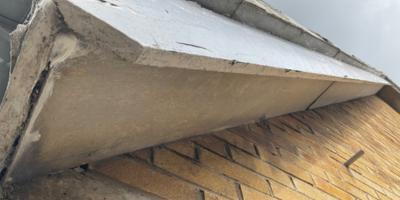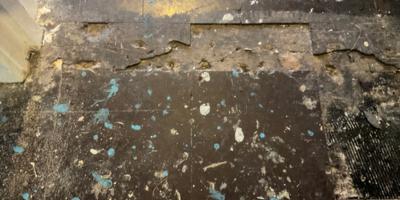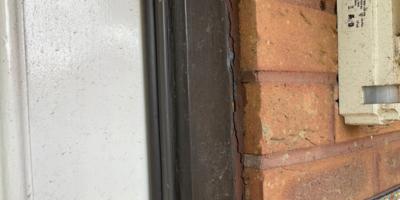
Asbestos safety
Many properties in the UK contain asbestos materials. Find out what to do if you think you may have asbestos in your home.
Asbestos in the housing industry
Asbestos is a naturally occurring mineral. Asbestos fibres are strong, flexible and have excellent insulating and fireproofing properties. Because of these qualities, they were often added to building materials.
There are three commonly used asbestos types:
- Crocidolite (blue)
- Amosite (brown)
- Chrysotile (white)
Blue and brown asbestos are higher risk than white asbestos. This is because they are brittle, so can more easily become airborne. They are also more resistant to your body’s natural defences.
In the UK, blue and brown asbestos were banned in 1985. White asbestos was banned in 1999.
Homes built after 1999 are unlikely to contain asbestos.
What kind of asbestos can be found in homes?
It is rare to find any high-risk asbestos-containing materials in your home. This is because the higher-risk materials were used where extremely high heat and chemical resistance was needed. This was mostly in industrial or commercial buildings, not homes.
The most common asbestos-containing materials in homes are low-risk composite materials, such as:
- ARTEX (Asbestos-Reinforced-Textured-Coating)
- Floor tiles and adhesive
The way these materials are made up means that the asbestos fibres are not easily released.
What should I do if I suspect there is asbestos in my home?
You can’t tell if a material contains asbestos with the naked eye. Don’t worry if you think there could be asbestos in your home. It is very common for homes built before 1999 to contain asbestos materials. These will be safe unless disturbed.
If you are unsure if a material contains asbestos or if you find or suspect any damaged asbestos in your home:
- Do not remove it
- Do not disturb it; this includes sawing or drilling
- Do not attempt to repair any damage yourself
- Do not dust, sweep or vacuum the affected area, as this will spread asbestos fibres into the air
If you suspect you may have asbestos-containing materials in your home do not panic
Contact us for advice. Our customer service team can help and will be able to tell you more about asbestos and your home.
Please get in touch by calling 0345 141 4663 or emailing asbestosinfo@homegroup.org.uk.
Where could asbestos be in my home?
Many properties in the UK contain asbestos materials. There are a few areas inside and outside of the home where you may find them:
Inside
- Flue pipes. These are most likely not in use and located within a void or the roof space
- Textured paints and coatings applied to walls and ceilings, known as ARTEX
- Wall boarding, for example, internal partitions, airing cupboards, boiler cupboards and air ducts
- Vinyl and linoleum floor coverings
- Asbestos resin toilet seats, cisterns, and putty around windows
- Water tanks and pipes
- Insulation around pipes, on and between partition walls and in loft areas
- Fire stopping around boilers and heating appliances
Outside
- Roof tiles and soffits
- Roofing sheets such as the corrugated type found on sheds or garages
- Soil and vent pipes found on the external wall behind toilets
- Undercloak to canopies and roofs. This is a narrow board that supports roof tiles when the edge of the roof overhangs
- Old sealant around windows and doors
Examples of where you might find asbestos
Is asbestos in the home dangerous?
In short, no. As long as it is not damaged or disturbed.
What are the risks?
When asbestos-containing materials are damaged or disturbed, they can release fibres that might become airborne. These become easy to breathe in due to the way the fibres have been broken down.
Regular, high-concentration exposure to airborne asbestos can result in serious health problems.
Carrying out DIY in your home
Building, decorating, and DIY activities can disturb or damage asbestos-containing materials. Drilling, sanding, and sawing could disturb asbestos fibres that could be inhaled. Inhalation of asbestos fibres can cause serious health-related issues.
If you are undertaking any work or improvements to your home, you should let us know before starting. This way, we can check our records to ensure your safety.
We take reports of potential asbestos-containing materials seriously
Our dedicated asbestos team are qualified in their field and have years of industry experience. The companies we use to survey our homes and complete asbestos removal works are specially accredited and licenced.
We are responsible for:
- Maintaining an asbestos register for all non-domestic properties. This means we can monitor the condition of any asbestos items and arrange works where needed
- Assessing the risk of asbestos for our customers within their homes
- Organising asbestos surveys where needed
- Removing any asbestos-containing materials that pose a risk
Our asbestos team is on hand to listen and help you. They can access information about your home and the likelihood of any asbestos-containing materials being in your home. If these are present, they will let you know.
If we think we need to investigate further, we will follow the process below and keep you updated at each stage.
Step one
If your home needs an asbestos survey, our approved contractors will carry it out. If they find any asbestos-containing materials, they will tell us straight away. Then, they will complete a full report within seven days of visiting your home.
Step two
If any asbestos-containing materials are a risk, we will let you know within 24 hours of the survey. We will also discuss the next steps and how to stay safe.
Our team will review the completed survey report in full.
Step three
We will instruct our approved Health and Safety Executive (HSE) licensed contractors to complete any work needed.
Managing asbestos
In most cases, asbestos-containing materials are safe when they are in good condition and unlikely to be disturbed.
Based on HSE guidance, we will leave and not remove any asbestos that is:
- In good condition
- Unlikely to get damaged
- Deemed low risk by our accredited surveying contractors
We will let you know where the asbestos-containing material is and the type. If anything changes, for example, a crack in an ARTEX ceiling or damage to floor tiles, let us know as soon as possible.
We will arrange for regular asbestos inspections in commercial and non-domestic properties. For example, this could include corridors and foyers in a block of flats.
Further information
- English asbestos safety guide
- Arabic Asbestos Safety Guide
- Asbesto Saugos Vadovas (Lietuvių Kalba)
- Guia De Segurança Contra O Amianto Em Português
- Kurdish Asbestos Safety Guide
- Mandarin Asbestos Safety Guide
- Polski Przewodnik Dotyczący Bezpieczeństwa Azbestowego
- Triginya Asbestos Safety Guide
- Urdu Asbestos Safety Guide



